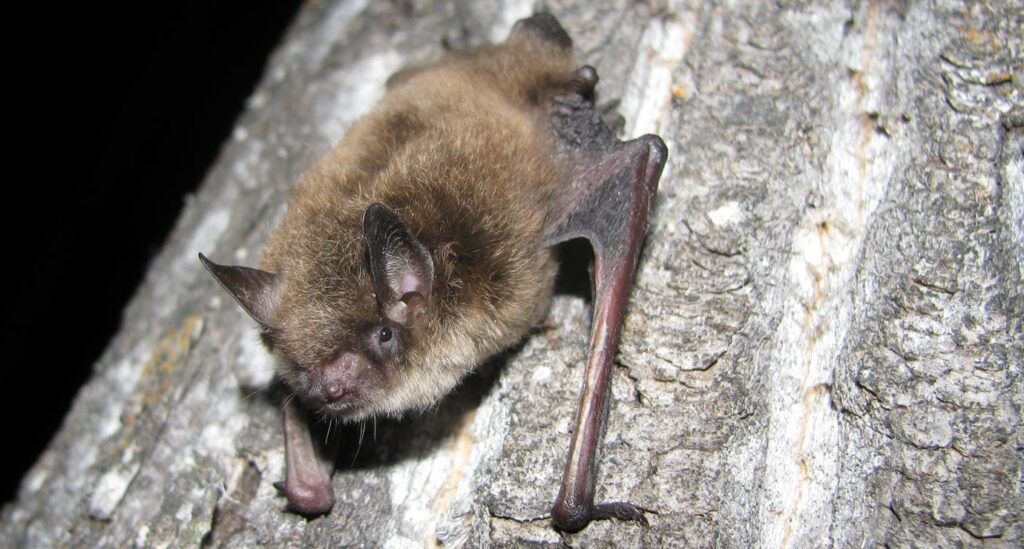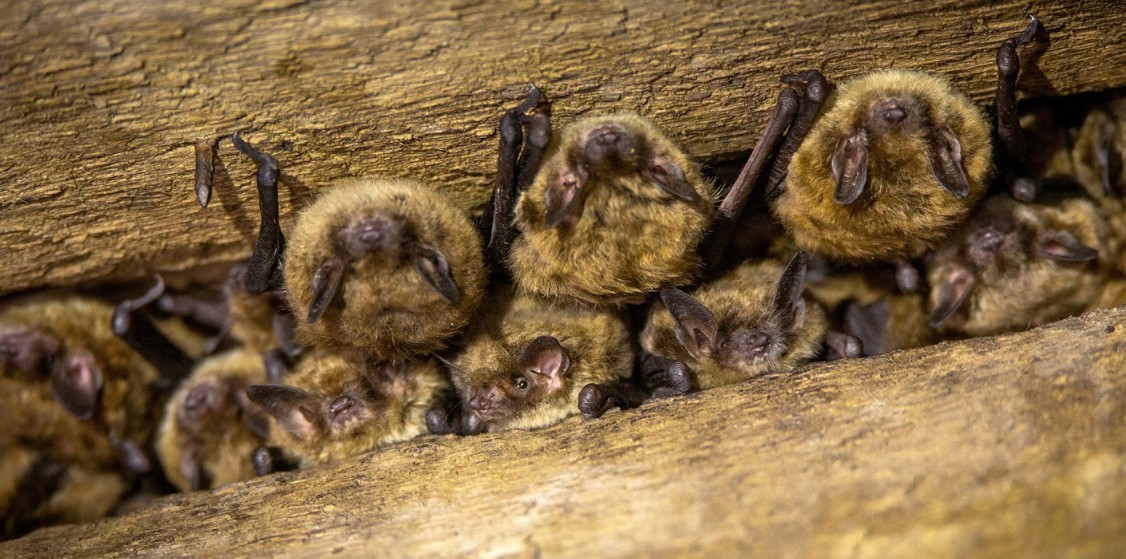Stories Blog / Community Stories / Legacy in Action
Going Batty!
Protecting Alberta’s Ecological Superheroes

When the Alberta Community Bat Program first started in 2015, things looked bleak for bats in North America. A fungal disease known as white-nose syndrome hit the eastern part of the continent hard starting in 2006, and while it hadn’t made it out west yet, more than six million hibernating bats are estimated to have already perished from the illness.
Cory Olson, the Program Coordinator for the Alberta Community Bat Program (ACBP), knew that if Alberta’s bats were to stand a fighting chance against the disease, they would need some help from their human neighbours.
“We began our program to try to change public perceptions of bats and to raise awareness of bat-friendly management techniques so that we can give them the best chances of survival,”
Now, more than eight years later, the ACBP is an official program of the Wildlife Conservation Society and continues to grow. White-nose syndrome remains an issue out east, but, as far as research can see, endangered hibernating bats like the little brown myotis and the northern myotis are still doing OK in Alberta.

“So far, we haven’t found that catastrophic die-off, so it could very well be that we have a bit of a refuge population that, if properly managed, can still be here in decades to come,” says Olson. The fungus that causes white-nose syndrome is only beginning to enter Alberta, so the next few years will be critical to understanding what effect it will have on our bats.
This year, the ACBP is making big improvements to bolster its conservation efforts. With funding from Edmonton Community Foundation, it can launch an intuitive online training program, update its existing guides and produce a video tutorial on how to make the best-in-class bat boxes. Olson says it’s vital that people get the most up-to-date information on bat conservation. Bat boxes are a great example of how good practices, informed by the best research collected and curated by the ACBP, can make a difference. While similar in theory to birdhouses, bat boxes tend to be much larger and taller. They can house up to 350 bats and need to be constructed with multiple chambers so that the bats don’t overheat on hot summer days.
Picking the right location for your bat boxes is just as important — and Olson recommends building more than one. Just like humans, these mammals like having options in real estate. Still, equipping people with the right bat-helping tools is only half the battle —the other challenge is dispelling some of the negative myths. While they don’t fight crime or pick fights with the Penguin or Joker, bats are ecological superheroes in their own right. Olson says that people camping at night will often notice a dark figure swooping overhead, especially if they have a fire going. That’s actually your bat protector snatching up pesky insects like mosquitoes and biting flies! During the peak of summer, bats eat their body weight in insects every night. With several million bats living in Alberta, you can do the math on just how much they eat. Olson says they could be playing a massive role in regulating bug populations.
“The best estimate we have is that bats are providing billions of dollars’ worth of free insect control for the North American economy”
We know that bats are among the top predators of a lot of disease-bearing insects and may help regulate their numbers. So, the risk of losing bats is far greater than the risk of having bats.” While white-nose syndrome is still a concern, humans must remain sensitive to the other risks they pose for bats. A concerning development for many bat biologists is the uptick in deaths related to wind turbines for migratory bats like the hoary bat, eastern red bat and silver-haired bats.
The evidence right now is, there’s a good chance that they will not survive the current projections for the growth in wind energy across North America,” Olson says. The good news is that there are already proven ways to begin mitigating these bat deaths and it won’t cost much to wind farm yields, Olson says. Turbine operators just need access to the right information and follow the right practices to manage their ecological impacts.
Whether it’s wind farmers or corn farmers, Olson hopes that the work the ACBP does will equip the community with the information and tools they need so that bats will have a safe and healthy home in Alberta for many decades to come.
This story comes from the Spring 2024 Edition of Legacy in Action. Read the full issue.